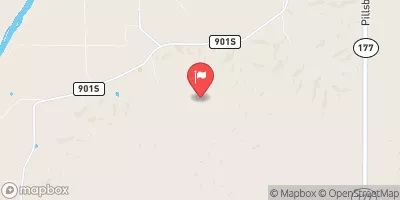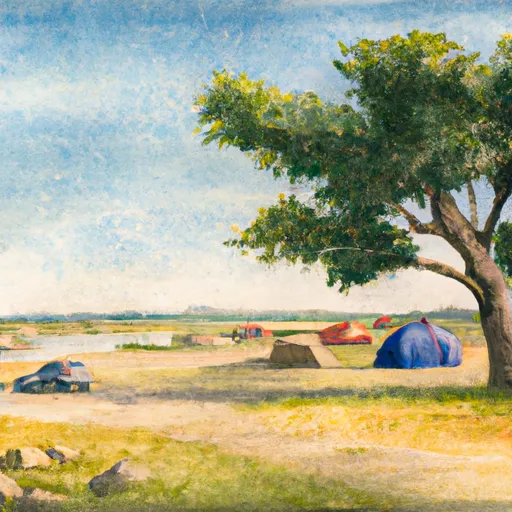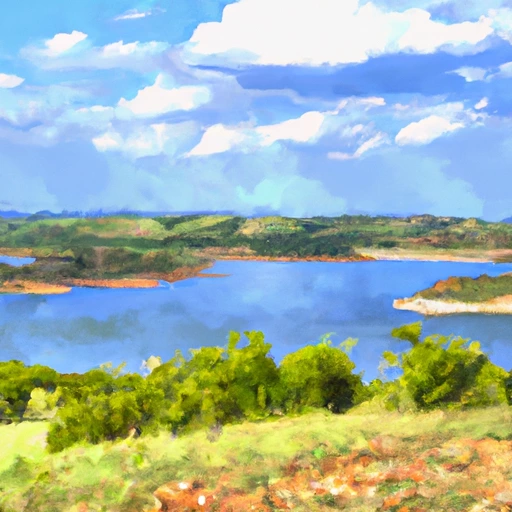Tuttle C Lk Nr Manhattan Reservoir Report
Nearby: Rogers Dam Kansas Farm Bureau Dam
Last Updated: January 1, 2026
Tuttle Creek Lake is a reservoir located in Manhattan, Kansas.
°F
°F
mph
Wind
%
Humidity
Summary
It was created in 1962 by the U.S. Army Corps of Engineers as part of a flood control project. The lake has a capacity of over 19 billion gallons and covers an area of 12,500 acres. The lake is fed by several small streams and the Blue River. It also receives water from snowmelt during the winter months. The lake is used for recreational purposes, including boating, fishing, and camping. It is also utilized for agricultural purposes, such as irrigation. The lake has had issues with algae blooms in recent years due to high levels of nutrients in the water. The U.S. Army Corps of Engineers has implemented measures to combat this issue.
Reservoir Details
| Lake Or Reservoir Water Surface Elevation Above Ngvd 1929, Ft 24hr Change | 0.0% |
| Percent of Normal | 100% |
| Minimum |
1,062.3 ft
2013-01-25 |
| Maximum |
1,135.77 ft
2019-06-01 |
| Average | 1,074 ft |
| Hydraulic_Height | 157 |
| Drainage_Area | 9628 |
| Year_Completed | 1962 |
| Nid_Storage | 2257000 |
| Hazard_Potential | High |
| Structural_Height | 157 |
| River_Or_Stream | BIG BLUE RIVER |
| Surface_Area | 13350 |
| Dam_Length | 7500 |
| Primary_Dam_Type | Rockfill |
| Nid_Height | 157 |
Seasonal Comparison
Reservoir Storage, Acre-Ft Levels
Lake Or Reservoir Water Surface Elevation Above Ngvd 1929, Ft Levels
Weather Forecast
Nearby Streamflow Levels
 Big Blue R Nr Manhattan
Big Blue R Nr Manhattan
|
505cfs |
 Kings C Nr Manhattan
Kings C Nr Manhattan
|
0cfs |
 Rock C Nr Louisville
Rock C Nr Louisville
|
16cfs |
 Kansas R At Wamego
Kansas R At Wamego
|
1150cfs |
 Kansas R At Fort Riley
Kansas R At Fort Riley
|
888cfs |
 Republican R Bl Milford Dam
Republican R Bl Milford Dam
|
501cfs |
Dam Data Reference
Condition Assessment
SatisfactoryNo existing or potential dam safety deficiencies are recognized. Acceptable performance is expected under all loading conditions (static, hydrologic, seismic) in accordance with the minimum applicable state or federal regulatory criteria or tolerable risk guidelines.
Fair
No existing dam safety deficiencies are recognized for normal operating conditions. Rare or extreme hydrologic and/or seismic events may result in a dam safety deficiency. Risk may be in the range to take further action. Note: Rare or extreme event is defined by the regulatory agency based on their minimum
Poor A dam safety deficiency is recognized for normal operating conditions which may realistically occur. Remedial action is necessary. POOR may also be used when uncertainties exist as to critical analysis parameters which identify a potential dam safety deficiency. Investigations and studies are necessary.
Unsatisfactory
A dam safety deficiency is recognized that requires immediate or emergency remedial action for problem resolution.
Not Rated
The dam has not been inspected, is not under state or federal jurisdiction, or has been inspected but, for whatever reason, has not been rated.
Not Available
Dams for which the condition assessment is restricted to approved government users.
Hazard Potential Classification
HighDams assigned the high hazard potential classification are those where failure or mis-operation will probably cause loss of human life.
Significant
Dams assigned the significant hazard potential classification are those dams where failure or mis-operation results in no probable loss of human life but can cause economic loss, environment damage, disruption of lifeline facilities, or impact other concerns. Significant hazard potential classification dams are often located in predominantly rural or agricultural areas but could be in areas with population and significant infrastructure.
Low
Dams assigned the low hazard potential classification are those where failure or mis-operation results in no probable loss of human life and low economic and/or environmental losses. Losses are principally limited to the owner's property.
Undetermined
Dams for which a downstream hazard potential has not been designated or is not provided.
Not Available
Dams for which the downstream hazard potential is restricted to approved government users.
Area Campgrounds
| Location | Reservations | Toilets |
|---|---|---|
 Tuttle Creek State Park
Tuttle Creek State Park
|
||
 Tuttle Creek Cove - Tuttle Creek Lake
Tuttle Creek Cove - Tuttle Creek Lake
|
||
 Stockdale - Tuttle Creek Reservoir
Stockdale - Tuttle Creek Reservoir
|

 Tuttle Creek Dam
Tuttle Creek Dam
 Tuttle C Lk Nr Manhattan
Tuttle C Lk Nr Manhattan
 Riley County
Riley County